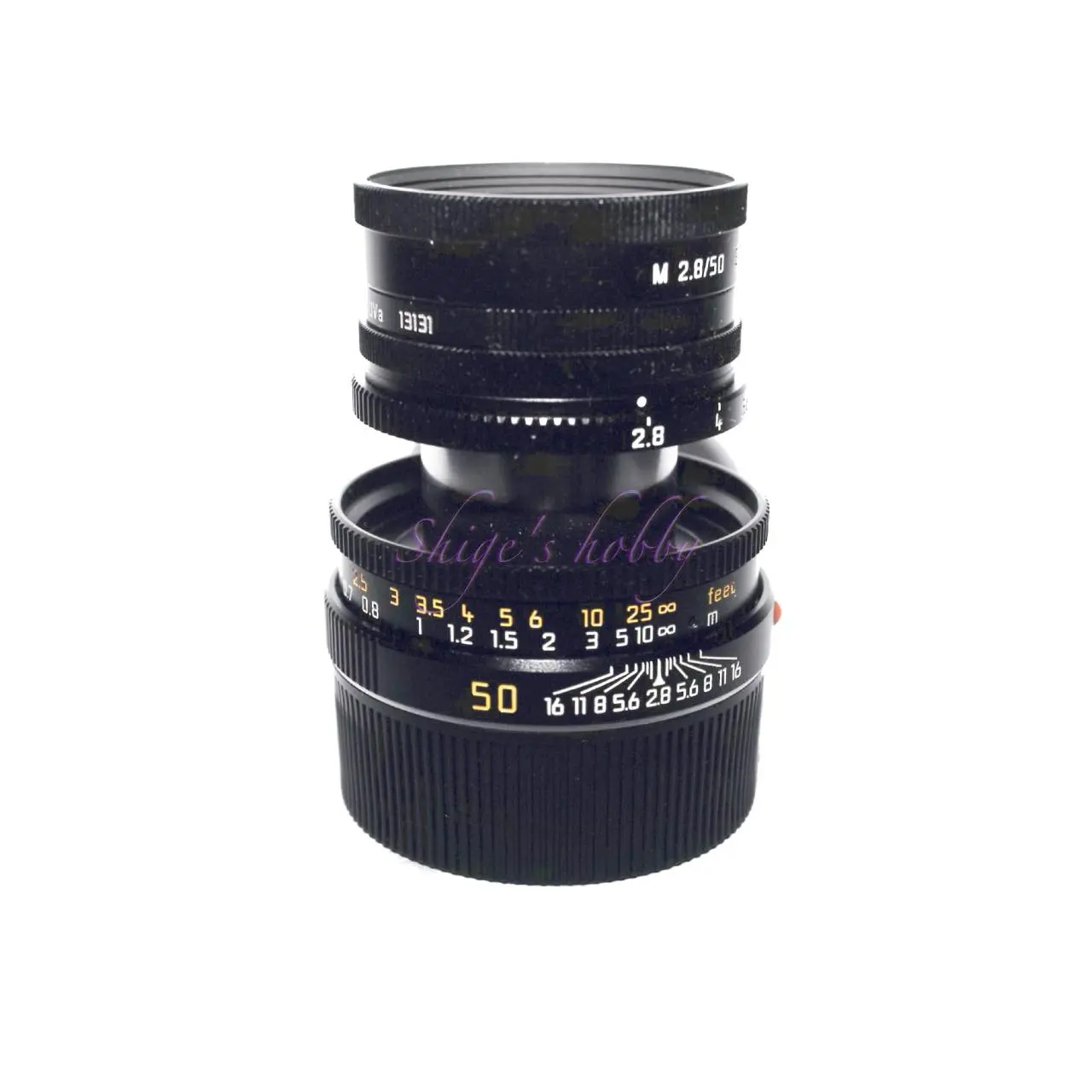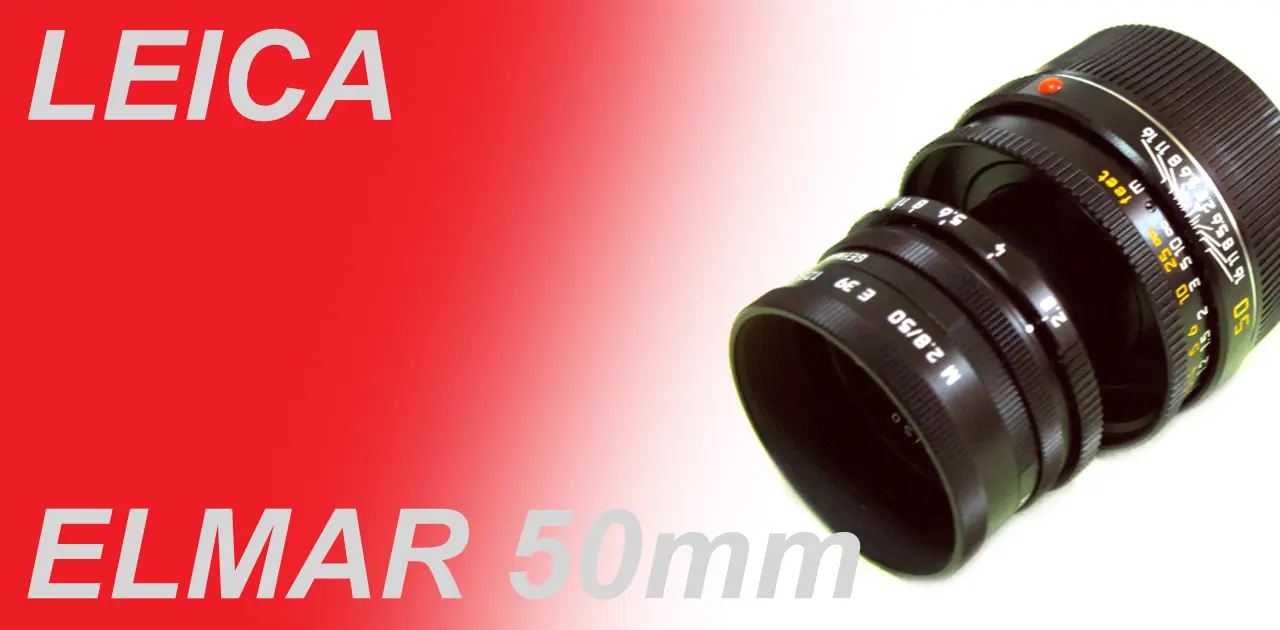A review and Photo example of the ELMAR M 50mm F2.8 with the LEICA M8 and LEICA M9.
Table of contents
Gallery
- The sample photos were taken with the LEICA M9 and LEICA M8.
Review


1.Overview
The Elmar M 50mm is a traditional lens that has been released since 1930. It started with an aperture value of F3.5 and became brighter in 1965 to F2.8.
The lens we will introduce is the latest Elmar 50mm released in 1994.
A total of about 17,000 units were manufactured from 1994 to 2007, and production ended as of 2024.
The lens barrel is available in black and silver, with the black one weighing 170g and the silver one weighing 250g, which is 80g heavier than the black one, because it is made of brass.
The main lens specifications are a lens configuration of 3 groups and 4 elements, an aperture value of F2.8 at maximum aperture, 6 aperture blades, and a minimum shooting distance of 0.7m.
The filter diameter is 39mm, and new models come standard with a dedicated screw-in cylindrical hood 12550 (black) or 12549 (silver).
Some lenses come with a 6-bit lens recognition code as standard, and for lenses that do not have a 6-bit code, the code can be added at Leica Service for a fee.


2.Usability
The Elmar 50mm F2.8 is a compact standard lens with a retractable barrel.
It is an inexpensive lens, but it is made with the same Leica quality as M-mount lenses of the same era, the retractable mechanism works smoothly, and the appearance does not feel cheap.
The brass silver lens in particular feels heavy. The balance was also good when attached to a large digital M Leica such as the M typ240.
The image quality is good even in the distant scenery under sunny skies, and the colors look good even without correction.
It is almost a Tessar developed from a triplet, so the image quality in the peripheral areas is slightly lower at full aperture, but it improves if you narrow the aperture a little.
For evening and night scenes, the brightness of F2.8 sometimes became a problem in terms of camera shake. Apart from this darkness, it was a versatile lens.
I owned this lens in both silver and black. Both lenses have a small focus ring angle and a light helicoid. The feeling when turning the focus ring is not sticky, which is typical of manual focus lenses, but rather light and airy like a Japanese-made AF lens.
3.Summary
In conclusion, to sum up the Elmar 50mm F2.8, it is a standard lens that can be used stably even at wide open aperture.
If you have a digital camera that can handle high ISO, you won’t find the dark maximum aperture a problem and you can fully enjoy the feel of Leica lenses, making it a lens worth considering as an introduction to Leica lenses.
Specification and Competitor
Retractable 50mm lenses have been released by various companies, Leica in particular has released the old Elmar, Summar, Summitar, and Summicron, and the first retractable lens released in Japan at the same time was the Serenar 50mm F1.9 by Canon.
At the same time as the Elmar, Konica, Voigtlander, and Ms-optics released standard retractable 50mm lenses.
These retractable lenses are made up of a Tessar for Leica, a Gauss for Konica, and a Heliar for Voigtlander and Ms-optics, with each company having their own unique lenses. All of these lenses are inexpensive on the market, so it’s fun to compare them.
- KONICA L39 HEXANON 50mm F2.4
- Voigtlander L39 HELIAR 50mm F3.5 Year101
- Ms-Optics APOQUALIA H 50mm F3.5
Comparing the Heliar and Tessar, we can see that the Heliar has one more lens element in the front group than the Elmar. This is because the aim was to correct aberration by cementing lenses together at a time when coating technology was immature.
The reason the lens configuration of the Elmar has not changed for nearly 80 years is that its performance as an Elmar is sufficient, and other lenses are available, such as the Summicron series for those looking for higher performance and the Summilux series for those looking for brightness, so it is thought that the lens configuration has remained the same since the lens was first released.


- The lens construction diagrams are quoted from each company’s materials, and the sizes have been adjusted by us, so they are not exact.
| Items | ELMAR-M New | APOQUALIA-H |
| Focal length(mm) | 50 | 50 |
| Max aperture | 2.8 | 3.5 |
| Min aperture | 16 | 16 |
| Aperture blades (Diaphragm) | 6 | 12 |
| Lens Construction | 4 elements in 3 groups | 5 elements in 3 groups |
| Min distance(m) | 0.7 | 0.8 |
| With goggles(m) | 21.6 (Retractable) 37.6 (Use) | 38 |
| Lens length(mm) | 52 | 49 |
| Max diameter(mm) | 39 | 30.5 |
| Filter Size(mm) | 170(Black) 245g(Silver) | 63 |
| Hoods | 39mm Screw in 12549(Silver) 12550(Black) | 30.5mm Screw in |
| Weight(g) | M | M |
| Goggles weight(g) | 1994〜2007 | 2009 |
| Release date | ¥100,000 | ¥65,000 |
Reference links
- ELMAR-M 50mm description page by LEICA Wiki
- Ms-Optics APOQUALIA H 50mm F3.5・Shige’s hobby
- KONICA L39 HEXANON 50mm F2.4・Shige’s hobby
- Voigtlander L39 HELIAR 50mm F3.5 Year101・Shige’s hobby
- LEICA ELMAR 50mm F2.8・Shige’s hobby
Update history
- 2025.5.17
- 2024.11.26
- 2024.06.06
- 2024.03.05
- 2022.05.13
Affiliate links
- Please see the disclaimer regarding advertising here.
- Italicized links in the text are advertisement links that take you to other sites.
- Leica lens・Ads by Amazon
- Leica digital・Ads by Amazon
- Leica camera body・Ads by Amazon
- Leica accessory・Ads by Amazon
- Leica book・Ads by Amazon




Be First to Comment